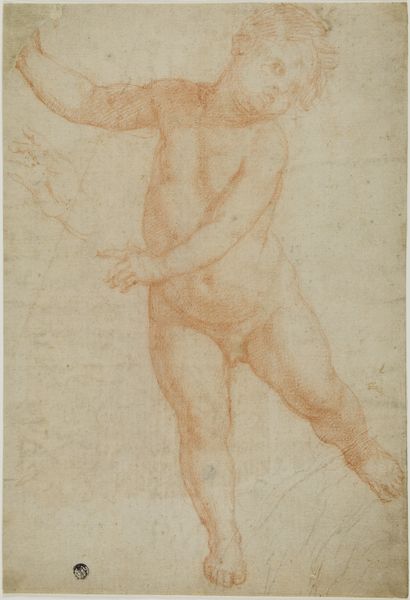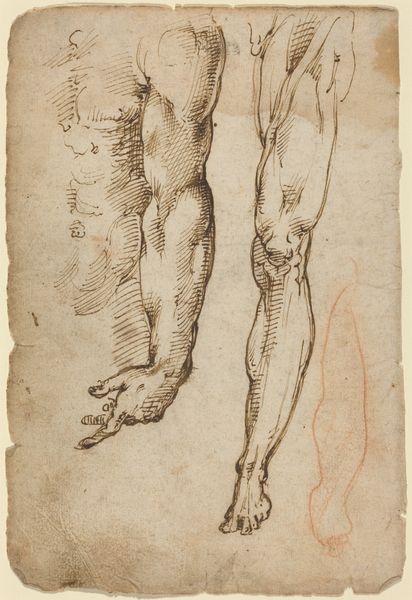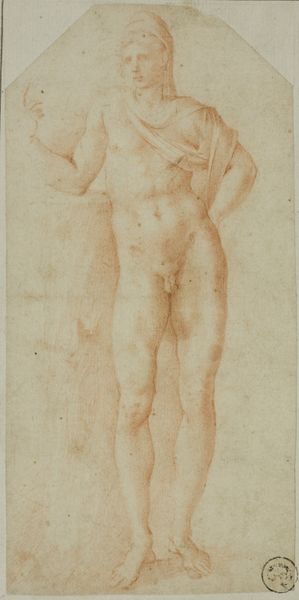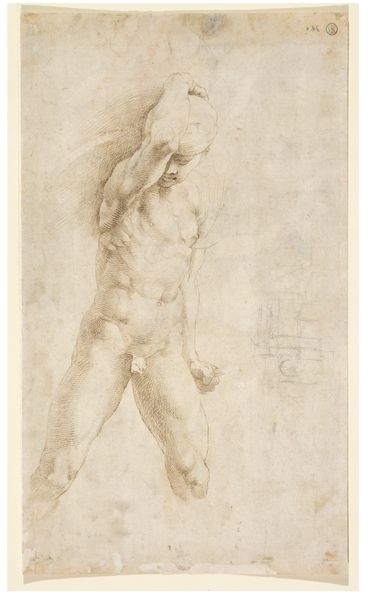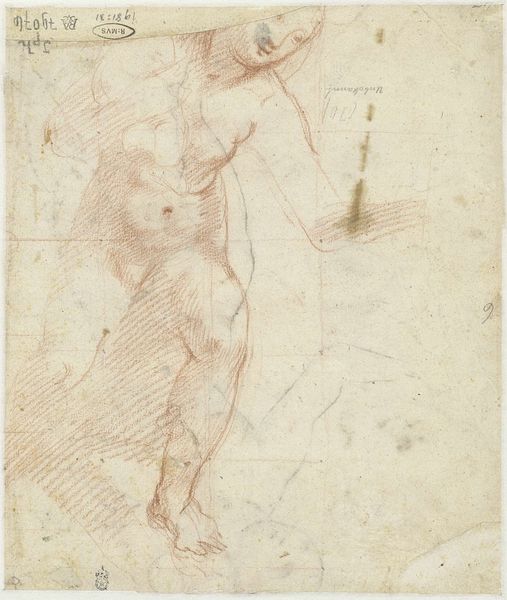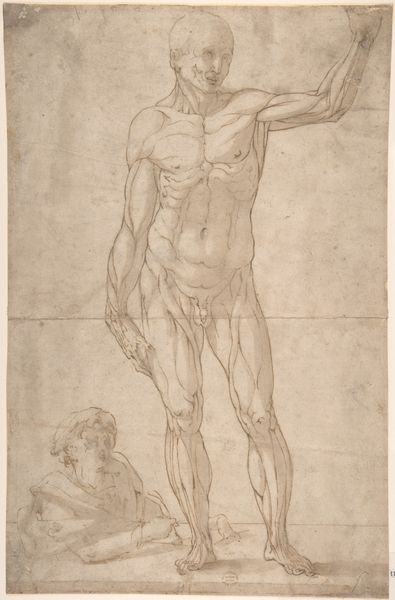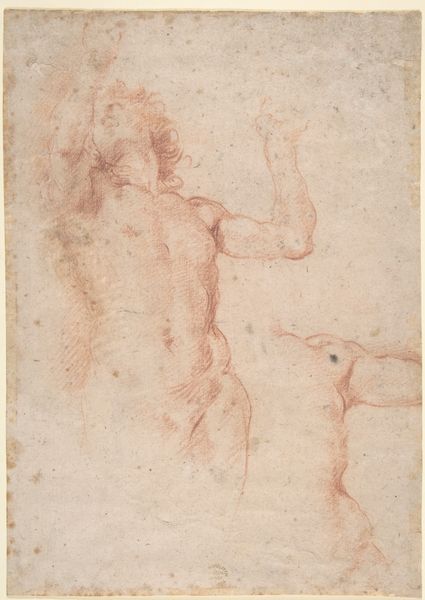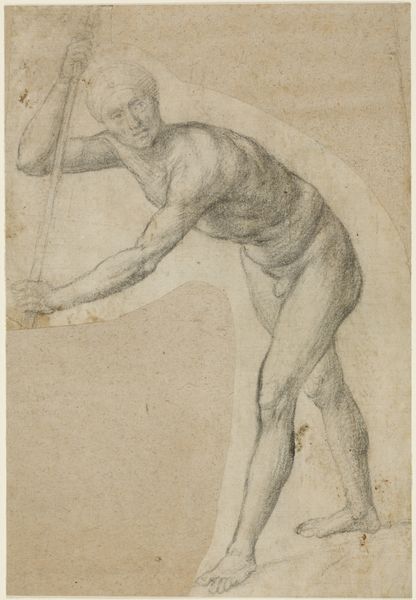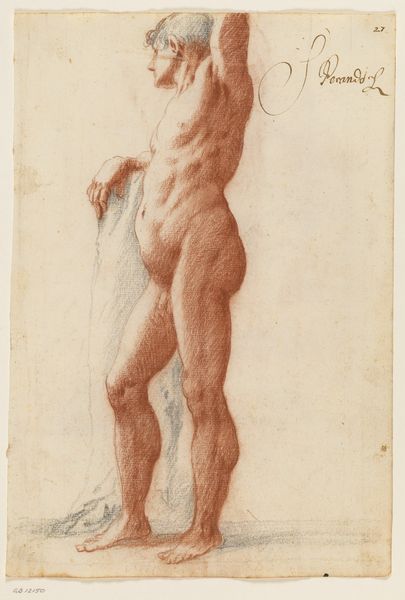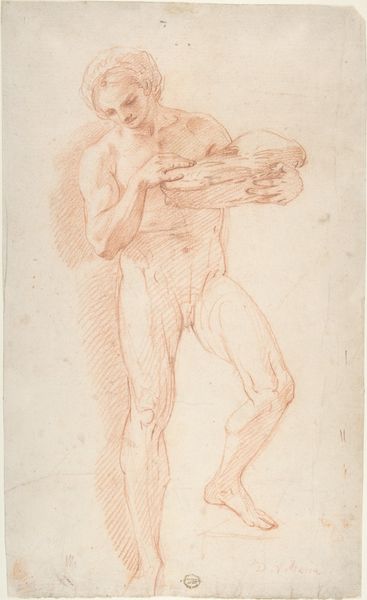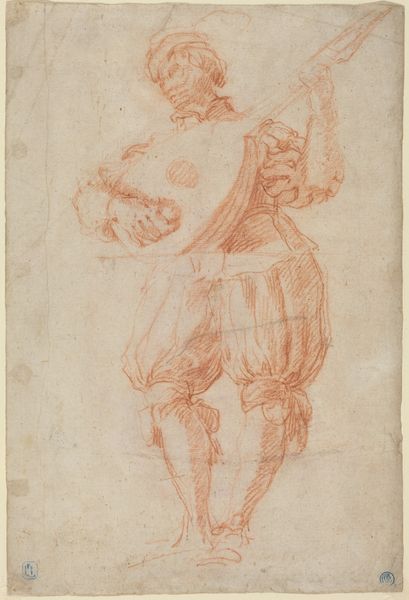
drawing, print, paper, pencil, chalk, black-chalk
#
drawing
# print
#
pencil sketch
#
charcoal drawing
#
figuration
#
paper
#
11_renaissance
#
pencil
#
chalk
#
academic-art
#
italian-renaissance
#
nude
#
black-chalk
Dimensions: 235 × 173 mm
Copyright: Public Domain
Curator: Right now, we're looking at a drawing called "Putto with Raised Arms" by Cristoforo Roncalli, dating from the late 16th century. It's rendered in pencil and chalk on paper, and is part of the Art Institute of Chicago's collection. Editor: Ah, yes, he has the robust and soft quality, the "heft" you want to reach out and playfully squeeze. What is he reaching for? It evokes, hmm... the anticipation of grabbing something delightfully forbidden. Curator: That delightful mischief you see is very typical of putti in Renaissance art. Roncalli clearly uses the grid underneath as a mathematical device, giving precise underpinnings to something intended to seem buoyant. Editor: I’m immediately drawn to the soft rendering. He uses line so economically. Almost like catching light in a jar with just breath. Curator: The use of chalk and pencil allows for a lot of subtle shading. And that contrapposto! That gentle twist in the body, where the weight shifts so gracefully... It showcases the Renaissance fascination with human form, idealized of course. He is more godlike cherub than an earth-bound toddler. Editor: Right. What also gets me is that while technically adept, this work feels quite personal, even intimate, in the same vein of Bandinelli's charcoal drawing. As if we are getting a glimpse into Roncalli's creative process as much as an exercise in human form. A peek into his joy, maybe? Curator: Well, this study was very likely intended for something larger, maybe a painting or sculpture. During this period the production of artworks depended on this type of careful planning. Editor: I'm probably too susceptible to romance. He gives him that charming vulnerability that melts even cynical hearts. Curator: This highlights one of the central tensions in Renaissance art. These seemingly carefree images are often steeped in theory, process, and precise measurements. Editor: And yet, isn't that tension where the magic really lies? Where joy is structured? It is where these figures continue to elicit, again and again, something true, something vital. Thanks for bringing this to light. Curator: A delightful perspective.
Comments
No comments
Be the first to comment and join the conversation on the ultimate creative platform.
